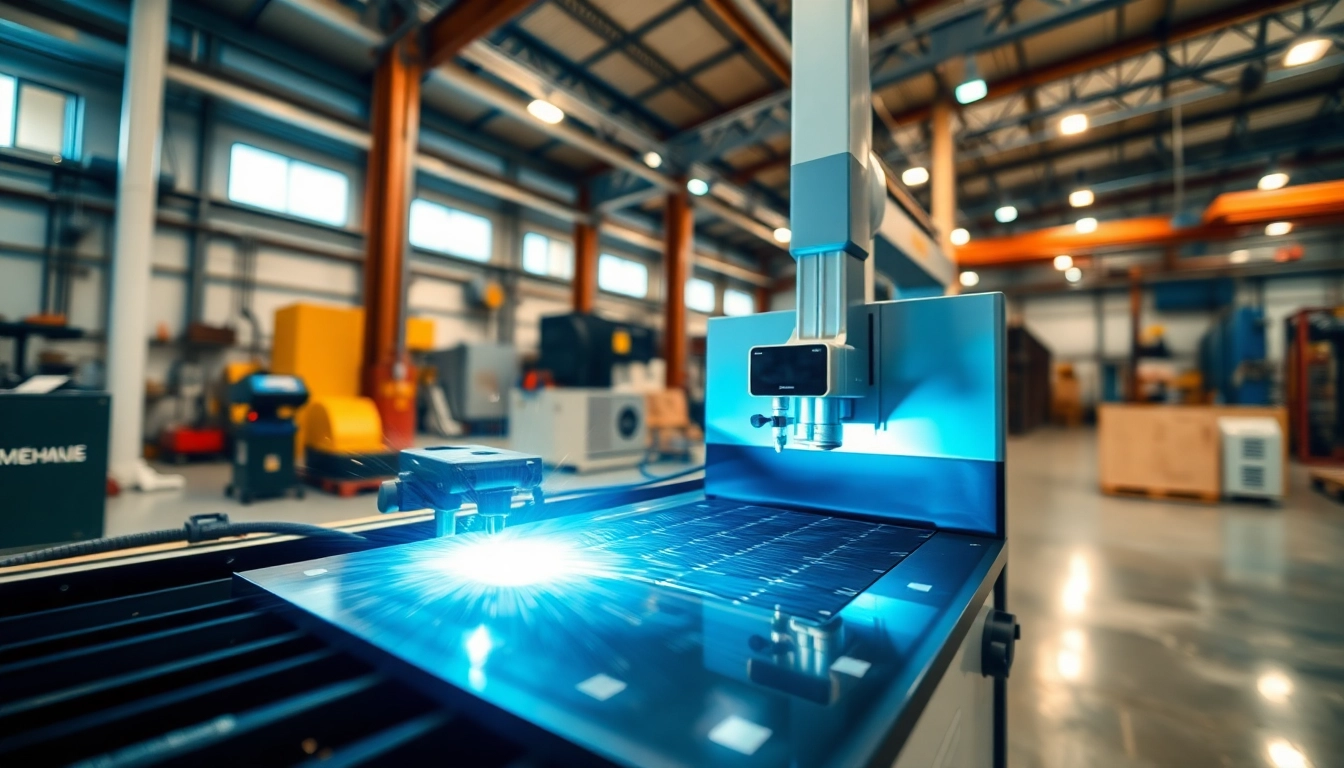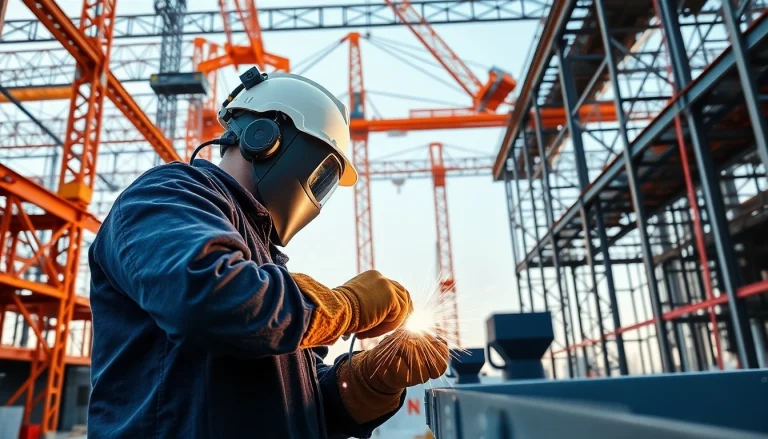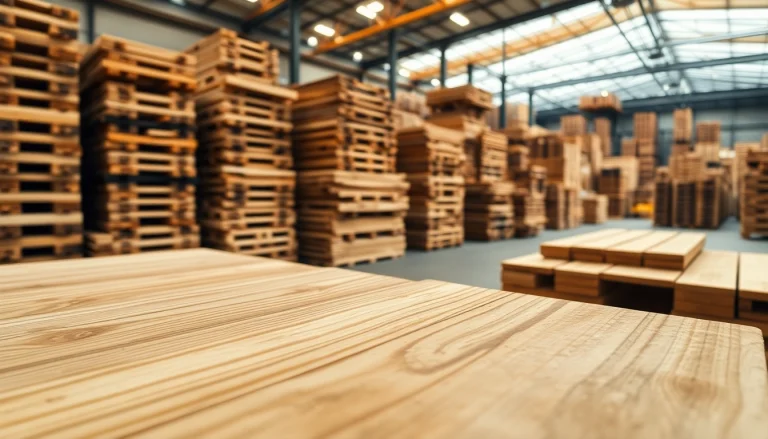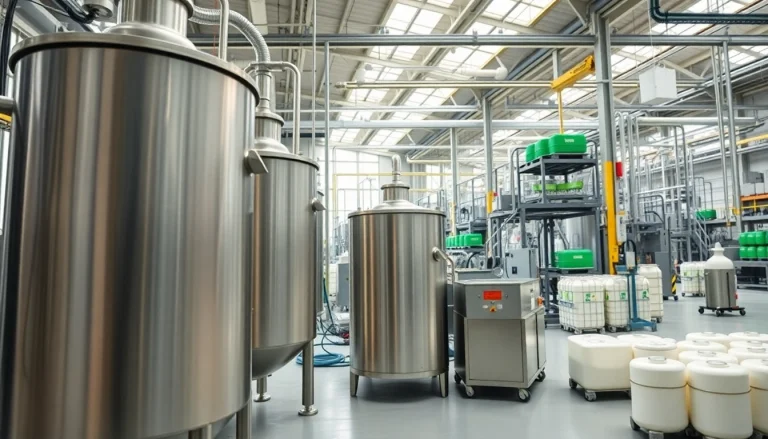Understanding the Basics of Laser Cleaning Machine
What is a Laser Cleaning Machine?
A Laser cleaning machine is an innovative tool used to clean various surfaces through the application of high-intensity laser beams. This technology represents a breakthrough in cleaning processes, allowing for precise and effective removal of contaminants such as rust, paint, corrosion, and other unwanted materials from substrates. The primary advantage of laser cleaning machines lies in their ability to perform cleaning operations without the need for chemicals or abrasive materials, making them a more environmentally friendly alternative to traditional cleaning methods.
How Laser Cleaning Machines Work
At the core of the functionality of a laser cleaning machine is its laser source, which generates a concentrated beam of light. This light is typically created using technologies such as fiber lasers or solid-state lasers. When directed at a surface, the intense energy of the laser beam interacts with pollutants and contaminants. The energy rapidly heats these unwanted materials, causing them to evaporate or be blown away by the force of the generated plasma. The process is controlled precisely through beam manipulation technology, allowing operators to maneuver the laser for optimal results while minimizing damage to the underlying surface.
Laser cleaning machines come in various configurations, from handheld devices suitable for small tasks to large, automated systems capable of industrial applications. They can be fitted with different focal lengths and powers to match the required cleaning task, ensuring versatility across various industries.
Applications of Laser Cleaning Machine
The applications for laser cleaning machines are extensive and diverse. Industries that principally benefit from this technology include:
- Manufacturing: Used for removing surface oxidation, rust, and paint from metal components and machinery.
- Shipbuilding: Effective for cleaning hulls and removing contaminants accumulated over time.
- Automotive: Ideal for restoring components and preparing surfaces for painting or coating.
- Historical Restoration: Utilized in the conservation of artifacts and structures, such as statues and old buildings, preserving their integrity.
- Aerospace: Cleaning of critical components to ensure safety and compliance with rigorous standards.
Advantages of Using Laser Cleaning Machine
Environmental Benefits
The use of a laser cleaning machine offers significant environmental advantages. Traditional cleaning methods often involve the use of toxic chemicals and solvents that can pose risks to health and the environment. In contrast, laser cleaning is a dry process that primarily relies on light energy and generates no harmful waste. This makes it a sustainable option that aligns with modern eco-friendly practices. Additionally, because laser cleaning results in minimal material wastage, the overall ecological footprint is substantially reduced.
Cost-Effectiveness Over Time
While the initial investment in a laser cleaning machine may be higher compared to traditional methods, the long-term savings often outweigh these costs. Laser cleaning machines operate with lower operational costs as they do not require ongoing purchases of cleaning agents or extensive labor. Their efficiency means less time spent on cleaning activities and reduced downtime for machinery. Furthermore, laser cleaning can extend the life of equipment and surfaces, contributing to lower maintenance costs and enhanced productivity over time.
Safety and Health Considerations
Safety is paramount in any industrial cleaning operation, and laser cleaning machines offer numerous health benefits as well. Traditional cleaning methods may expose workers to hazardous chemicals and fumes. In contrast, laser cleaning minimizes these risks, providing a safer work environment. That said, operators should still take necessary precautions, such as wearing appropriate protective gear, due to the intensity of the laser beam, which can pose risks if mismanaged. Training operators on the proper use of equipment is critical to ensure a secure and effective cleaning operation.
Choosing the Right Laser Cleaning Machine
Key Features to Look For
When selecting a laser cleaning machine, several key features should inform your decision to ensure optimum performance:
- Laser Type: Consider whether you need a fiber laser, CO2 laser, or solid-state laser, based on your application needs.
- Power Output: Machines with adjustable power output are beneficial for varying cleaning tasks, offering versatility.
- Portability: Depending on your cleaning environment, a portable or stationary machine may be more appropriate.
- Control Systems: Advanced control systems that allow for precision cleaning can improve effectiveness and ease of use.
- Cooling Systems: Adequate cooling solutions are essential for maintaining operational efficiency, especially during extended use.
Common Mistakes When Selecting Equipment
Many businesses make common errors when choosing laser cleaning machines, which can lead to suboptimal results:
- Overlooking Specific Needs: Not adequately assessing the specific cleaning requirements or materials that need treatment can result in acquiring equipment that doesn’t fit the job.
- Ignoring Maintenance Requirements: Failing to consider routine maintenance needs can drive up long-term costs and decrease machine lifespan.
- Budget Over Quality: Focusing solely on the lowest price might result in selecting a machine that falls short in performance or durability.
- Underestimating Training: Neglecting to incorporate operator training into investments can compromise cleaning effectiveness and safety considerations.
Understanding Different Models
Laser cleaning machines come in various models, each designed to meet specific industry needs:
- Handheld Models: Ideal for small-scale cleaning and intricate tasks, these portable units are perfect for operators who require mobility.
- Robotic Systems: These automated systems are suitable for large-scale industrial applications, providing consistent results without the need for human intervention.
- Stationary Units: Designed for heavy-duty tasks, these machines are often located in fixed positions and suitable for mass production environments.
Best Practices for Operating a Laser Cleaning Machine
Safety Protocols During Operation
Ensuring the safety of personnel during the operation of a laser cleaning machine is of utmost importance. Following established safety protocols helps to prevent accidents and protect the operator from potential hazards. Essential safety practices include:
- Personal Protective Equipment (PPE): Operators should wear appropriate PPE, including safety glasses and gloves, to safeguard against exposure to laser beams and debris.
- Clear Work Area: Maintain a clean and organized workspace, free from unnecessary obstacles that could lead to accidents.
- Warning Signage: Indicate the presence of lasers with visible warning signs to prevent unauthorized personnel from approaching the working area.
- Emergency Protocols: Establish and communicate emergency procedures in case of accidental exposure or equipment malfunction.
Maintenance Tips for Longevity
To maximize the lifespan and performance of a laser cleaning machine, regular maintenance is essential. Fundamental maintenance practices include:
- Regular Cleaning: Keep the machine clean by removing any debris or contaminants that can hinder performance.
- Scheduled Inspections: Conduct regular checks of the machine’s components to identify potential issues before they escalate into costly repairs.
- Software Updates: Keep the machine’s software up to date to ensure optimal performance and access to the latest features.
- Cooling System Checks: Regularly inspect and maintain cooling systems to prevent overheating during prolonged operations.
Maximizing Efficiency and Results
Operators can enhance the efficiency of laser cleaning through various strategies:
- Proper Calibration: Ensure the machine is accurately calibrated for specific cleaning tasks to improve effectiveness.
- Optimal Settings: Adjust power and speed settings based on the type of material and level of contamination to achieve the best results without causing damage.
- Training Programs: Invest in regular training for operators to keep them informed of best practices and new technology trends in laser cleaning.
- Feedback and Adjustments: Encourage operators to provide feedback on equipment performance and suggest adjustments to enhance efficiency.
Future Trends in Laser Cleaning Machine Technology
Innovative Features on the Horizon
The landscape of laser cleaning is continuously evolving, driven by technological advancements. Future innovations may introduce:
- Integration with AI: Artificial intelligence can optimize cleaning processes, allowing for automatic detection of contaminations and automatic adjustments to settings for improved efficiency.
- Enhanced Portability: We can expect future machines to become smaller and more lightweight without compromising on power, making them easier to use in tight spaces.
- Advanced Safety Features: New technologies may focus on further enhancing safety through automated shut-off systems and improved beam control mechanisms.
- Multi-Functional Machines: Future machines are likely to incorporate multiple cleaning techniques, providing versatility in a single unit.
Impact of Industry 4.0 on Cleaning Solutions
The rise of Industry 4.0 is reshaping many facets of industrial operations, including cleaning solutions. The impact includes:
- Data-Driven Insights: IoT technologies can provide real-time data on machine performance, leading to proactive maintenance and enhanced operational efficiency.
- Remote Monitoring: Operators will be able to monitor and control cleaning processes from remote locations, streamlining operations and increasing response time to any issues.
- Integration with Smart Manufacturing: Automated cleaning within smart factories can enhance workflow continuity and reduce production downtime.
Predictions for Market Growth
As industries increasingly recognize the benefits of laser cleaning, market growth is anticipated. Factors contributing to this growth include:
- Increased Demand for Eco-Friendly Solutions: The industry’s shift towards sustainable cleaning options will bolster the adoption of laser cleaning machines.
- Expanding Industrial Applications: As more industries discover advantages beyond traditional applications, the range of use cases will likely expand, inviting further investment.
- Technological Advancements: Continuous improvements in laser technology will make these machines more accessible and efficient, encouraging wider usage.








